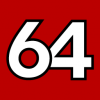-
Posts
12419 -
Joined
-
Last visited
-
Days Won
551
Content Type
Profiles
Forums
Events
Everything posted by Fiery
-
Where is the fan connected to? If it's the motherboard, then please let me know what motherboard do you have.
-

Fixed: VRM temperature bug on ASRock Fatal1ty AB350 Gaming-ITX/ac
Fiery replied to izzatg1's topic in Hardware monitoring
First, please right-click on the bottom status bar of AIDA64 main window --> Sensor Debug --> ISA Sensor Dump. Copy-paste the full results into this topic, or attach the results as a TXT file to your post. You may need to enable status bar in AIDA64 / main menu / View first. Thanks, Fiery -

ASUS Maximus XI Apex (Z390) Waterflow and Water Temp sensors
Fiery replied to Chris77's topic in Hardware monitoring
We will add the missing readings in the next AIDA64 beta update. I'll post a message into this topic once the new beta build is available for download. -
Thank you! Please also right-click on the bottom status bar of AIDA64 main window --> Sensor Debug --> SMBus Dump (Full). Copy-paste the full results into this topic, or attach the results as a TXT file to your post. Thanks, Fiery
-
Please right-click on the bottom status bar of AIDA64 main window --> Sensor Debug --> ISA Sensor Dump. Copy-paste the full results into this topic, or attach the results as a TXT file to your post. You may need to enable status bar in AIDA64 / main menu / View first. Thanks, Fiery
-
Thank you for feedback
-
We've altered AIDA64 to show the 2 thermal readings in the same line: https://www.aida64.com/downloads/latesta64xebeta
-
Here's the new public beta build that includes the improvements from the special beta build https://www.aida64.com/downloads/latesta64xebeta
-
The above mentioned new AIDA64 beta update is now available for download: https://www.aida64.com/downloads/latesta64xebeta
-
Yes, it's because we've recently added support for measuring the secondary temperature for NVMe SSDs. In the next AIDA64 beta the two lines will be joined together to avoid confusion.
-
Embedded Controller (EC) is a special chip on your motherboard that extends the usual sensor measurement capabilities of the Super I/O chip (that's also on your motherboard) with special readings. However, on some Asus motherboards polling (reading) EC registers can cause slowdowns and latency spikes. In which case it's best to disable EC support in AIDA64, and by that sacrificing a few sensor readings. If you make a screen shot or photo of the Computer / Sensor page with and without the EC options enabled, you can see which values you would lose when you disable EC support. In most case those are not vital sensor readings, and there are only a few of them.
-
Thank you for your message. I'm happy that you would translate our app to Japanese. I'll send you the XML file in email.
-

Fixed: VRM temperature bug on ASRock Fatal1ty AB350 Gaming-ITX/ac
Fiery replied to izzatg1's topic in Hardware monitoring
I don't think that reading is valid, but it's hard to tell. Can you please check whether you can see the same VRM thermal reading in the UEFI Setup (BIOS Setup), or in ASRock's own monitoring utility called F-Stream Tuning utility? -
First of all, make sure to upgrade to the latest beta version of AIDA64 Extreme available at: https://www.aida64.com/downloads/latesta64xebeta After upgrading to this new version, make sure to restart Windows to finalize the upgrade. That should help about issue #1 and #2. If not, then please let me know where exactly are all your fans connected to (motherboard or water cooler/coolers), and whether the motherboard connected fans are "iffy" or the ones connected to your water cooler/coolers. As for #3, as you can see on the AIDA64 OSD Panel shots, there're quite a few thermal readings available for your CPU, namely "CPU", "CPU Package" and 4 core temperatures. iCUE could indicate any of those as CPU temperature, or it could simply show the liquid temperature of your water cooler as CPU temperature.
-
Make sure to upgrade to the latest beta version of AIDA64 Extreme available at: https://www.aida64.com/downloads/latesta64xebeta After upgrading to this new version, make sure to restart Windows to finalize the upgrade. As for "package", it means the whole CPU package, including all cores and uncore. The whole 5x5 cm sized thin package of metal
-
Please try to disable the two Embedded Controller related options in AIDA64 / main menu / File / Preferences / Stability, and restart AIDA64 to apply the changes. Let me know if it makes a difference.
-
No toolbar button just yet. You can switch between Celsius and Fahrenheit in AIDA64 / main menu / File / Preferences / Hardware Monitoring, or via the right-click context menu on the Sensor page. Thank you for your feedback!
-
It's already done. I'll send you a special beta build link email in a minute. It would be awesome if you (you and your friends as well) could send us some feedbacks on how usable the joined lines are now for you.
-
I guess you're too old-school to hassle with the OSD Panel BTW, if you want to reset the order of items on the OSD Panel, you can do that by editing the AIDA64.INI file, and removing all lines that start with OSDItem_. Make sure to _not_ have AIDA64 running while you edit the AIDA64.INI file.
-
If you leave the SensorPanel open when you exit AIDA64, it will automatically open again when you start AIDA64 the next time.
-
GPU-Z doesn't have an API or SDK, so it's not possible to use its detection capabilities by 3rd party applications.
-
You can do that one-time customization of the sensor readings using any other module of AIDA64 With SensorPanel you wouldn't have to hassle with editing the language module...
-
If you have the OSD Panel enabled, it is displayed quicker than if you first had to navigate to Computer, then Sensor... If you don't have it enabled, then right-clicking on the AIDA64 System Tray icon --> Show OSD Panel will display the OSD Panel quickly. And you can still use the hot-keys as well. If you mean quickly glancing on sensor readings on a new system, then I agree, the Sensor page is great and superior to deep-customizing the OSD Panel or SensorPanel. Then again, you seem to bring up conflicting issues and situations. On one hand you're advocating for a deeper customization of the Sensor page -- but on the other hand you find it quicker to go to the Sensor page for a quick glancing on sensor readings. If you need something quickly, customizing Sensor page, OSD Panel or SensorPanel are equally time consuming in my book. If you have time to customize the Sensor page, then -- at least the way I see it -- you can spend that time on customizing the OSD Panel or SensorPanel instead. Maybe I miss something, but I still cannot see the real use scenario where customizing the Sensor page is superior to making your own layout for OSD Panel or SensorPanel.
-
You can either manually launch AIDA64, minimize it to the System Tray, and then you can use the hot-keys to show/hide OSD Panel or SensorPanel -- or you can configure AIDA64 to be automatically launched at Windows startup, as well as you can configure it to be started with its main window automatically minimized to the System Tray. Either way, if you want to use the Sensor page, OSD Panel or SensorPanel features, AIDA64 first needs to be started somehow.


